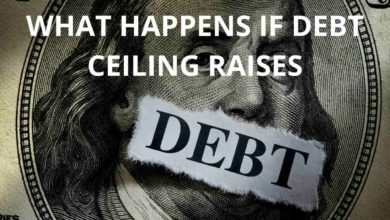United States Slows Rate Rises to 0.25%

Despite meeting the market’s expectations over its 0.25% rate hike and Statement language, risk sentiment pushed up stocks and triggered a Dollar selloff during and after Jerome Powell’s subsequent presser.
The United States Federal Reserve raised its interest rate by 0.25% yesterday, leaving benchmark borrowing costs at 4.75%, in what was the smallest rate rise since March 2022.
Yet the Federal Open Market Committee (FOMC) warned that this does not mean the end of the interest rate raising cycle, in the battle to reduce inflation to its 2% target.
Interest rates are at their highest since 2007, after a series of more aggressive rate rise rises over the past year.
In December 2022, there was a 0.50% rate rise after four consecutive 0.75% increases.
The FOMC made its decision to ease the pace of a rate rise as inflation continues to ease in the United States.
Annualized inflation fell to 6.5% in December, a significant drop from last year’s June peak of 9.1%.
Yet the FOMC arrived at its decision yesterday factoring in the inflation risks that remain, even though the committee accepts that price pressures have cooled they are still elevated.
The robust United States jobs market is especially a concern regarding inflation, as unemployment is low.
The Bureau of |Labor Statistics’ latest figures revealed that job openings increased by 6.7% in December up to 11 million, suggesting a relatively tight labor market.
Recent indicators have pointed to a modest growth in spending and production, and the conflict in Ukraine continues to add uncertainty to the global economic picture.
Looking ahead, the FOMC said that the extent of future increases will depend on the effect of the cumulative monetary tightening stance, and its effects on inflation and economic activity.
No Surprises in the Rate or the Statement
Markets were strongly expecting the rate hike of 0.25%, and that language hinting at the potential for further rate hikes during the near term would be kept within the Statement. Expectations were met.
In the lead up to the interest rate announcement, the CME Fed Watch Tool, which asks respondents of their expectations for the target rate, revealed that 99.3% anticipated a 0.25% rate increase.
Since the FOMC’s decision was made public, 82.7% of the poll contributors said that they expect a further 0.25% rise at the next FOMC meeting on 22nd March. This is significant given the fact that during Jerome Powell’s press conference after the release, risk sentiment strengthened, pushing up stocks and the US Dollar.
Richard Carter, head of fixed interest research at Quilter Cheviot, said: “Investors should not confuse this as the end of the rate hiking cycle, instead a pause for breath as the Federal Reserve looks to continue to fight inflation, while also assessing if further hikes are the way to go.”
“Furthermore, even if we are coming to an end of the interest rate rises, one should not assume that this will be followed by interest rate cuts.”
“While inflation shot up to historic levels, it is going to fall at a much slower pace and as such any cut in interest rates may not materialize until the end of the year or potentially in 2024.”
Powell Says No Rate Cuts
Federal Reserve Jerome Powell indicated that interest rate cuts are not to be expected in 2023.
Calls from the bond markets that there could be a cut in rates before a pause, as some market analysts have said that prices will fall faster than what the Federal Reserve expects, have not altered Powell’s typically hawkish view of controlling inflation.
Yet Powell conceded that if inflation does fall more quickly than expected, policy settings could be changed.
In the press conference after the rate change was declared, Powell said that the “job is not done” concerning taming inflation.
Stocks Higher, Dollar Lower
At the close of the day’s trading session, the S&P 500 Index had risen by about 1% to close at its highest closing price since August 2022, more than 5 months ago. However, the key resistance level at 4121 held, although futures have been trading during today’s London session above that level, which looks likely to be pivotal.
The NASDAQ 100 Index rose even more strongly to a new 4-month high.
The US Dollar fell against its major currency rivals in the aftermath of the rate decision but regained some ground later. The Euro and Australian Dollar have been especially strong against the greenback, with the EUR/USD currency pair reaching a new 9-month high above $1.1020.
The long-term stock market outcome of yesterday’s Fed release remains unclear, so traders should review price action carefully over the coming days for clues. It does seem clear that the Fed weakened the US Dollar, however, giving encouragement to traders wishing to exploit existing long-term Forex trends in the major currency pairs.
Source link






